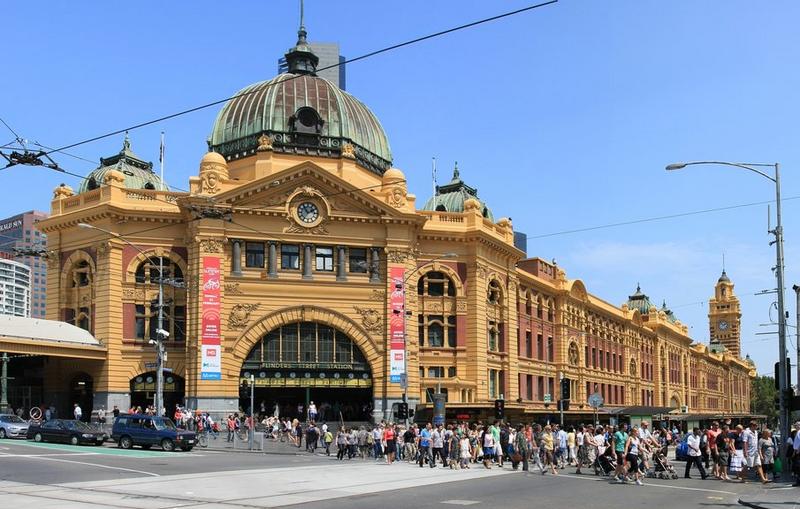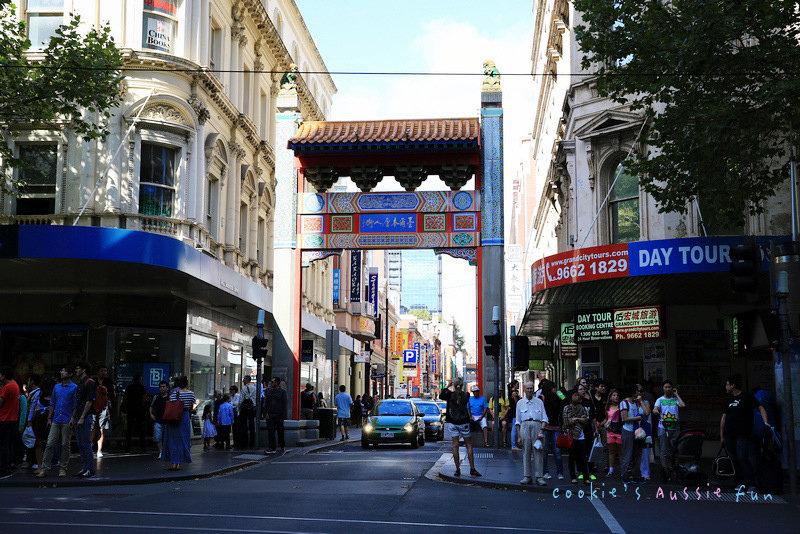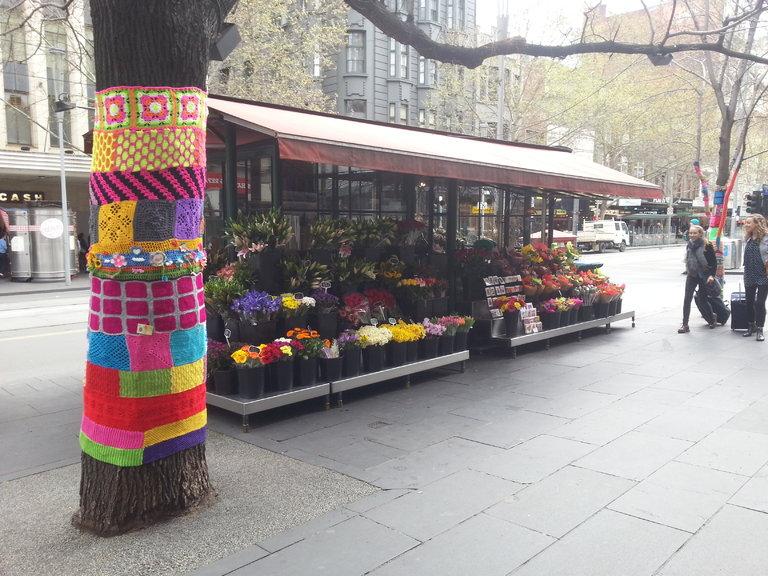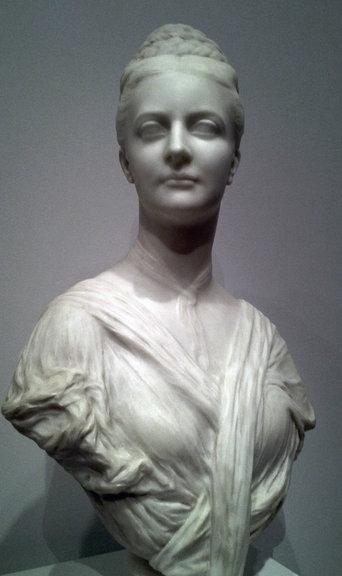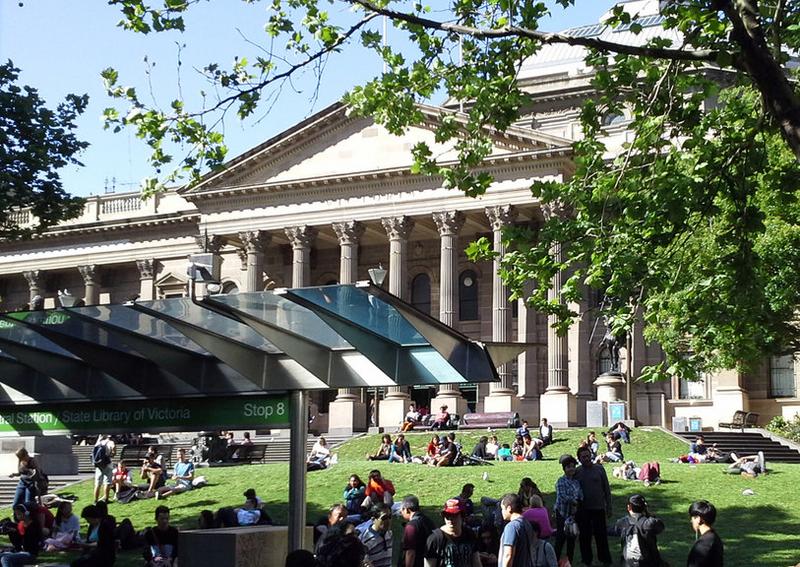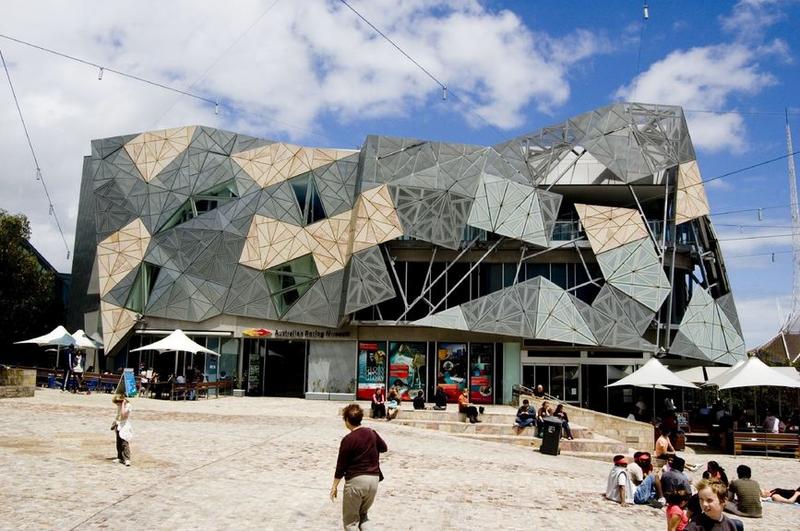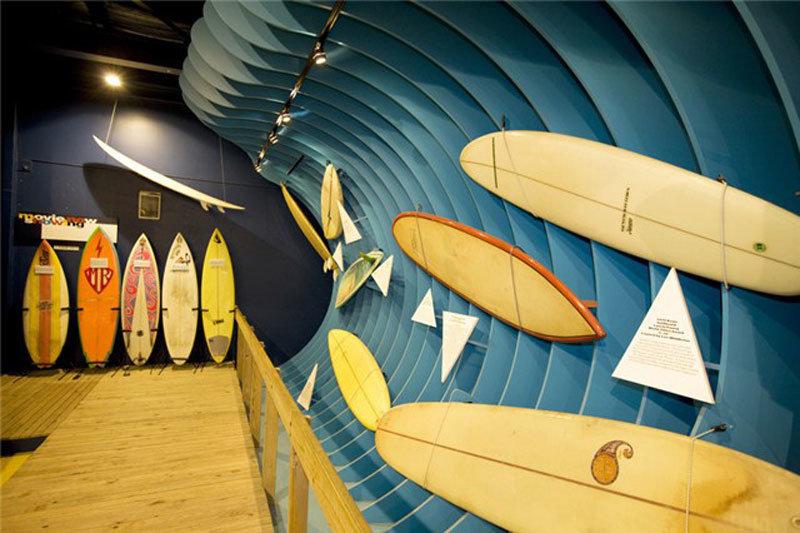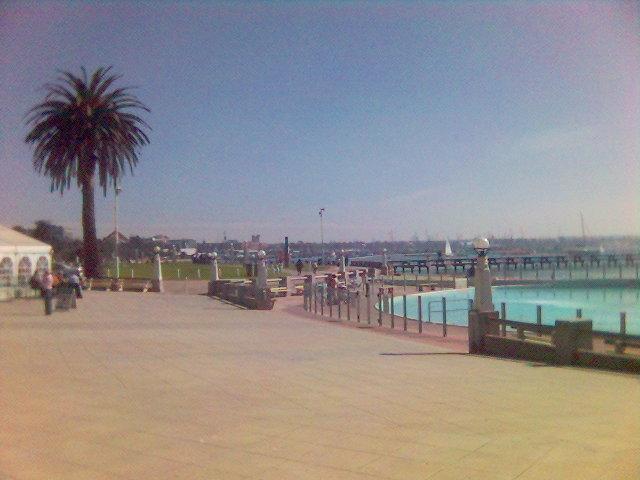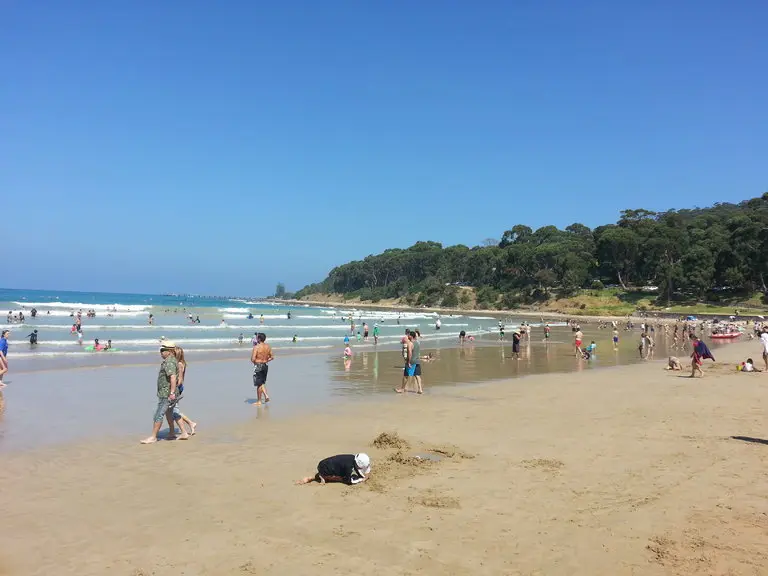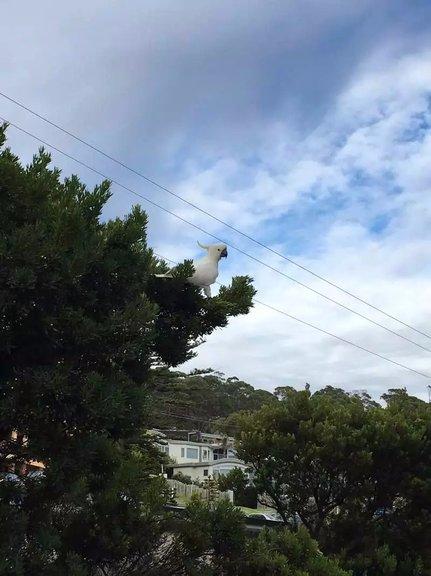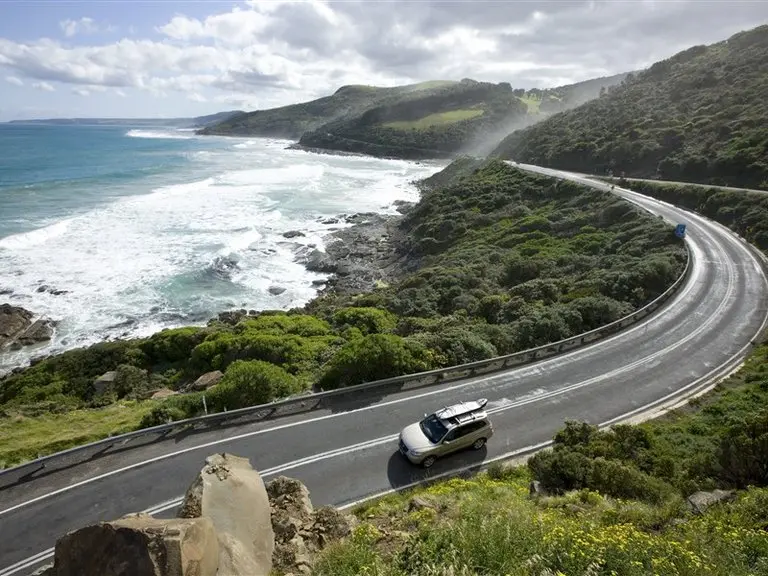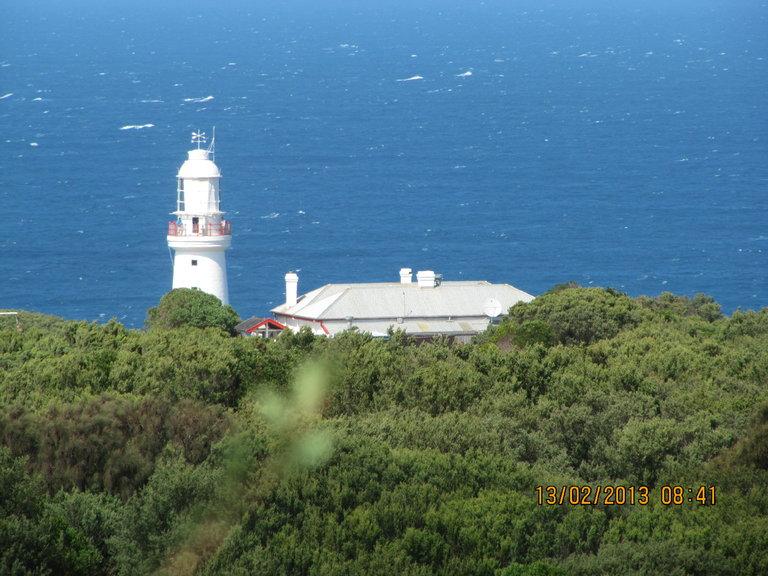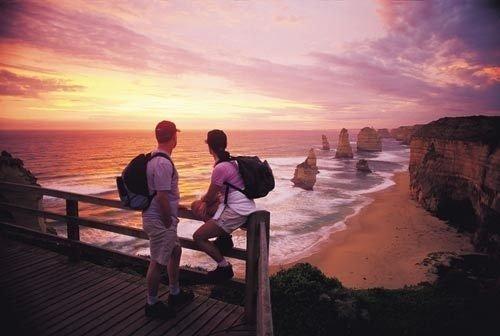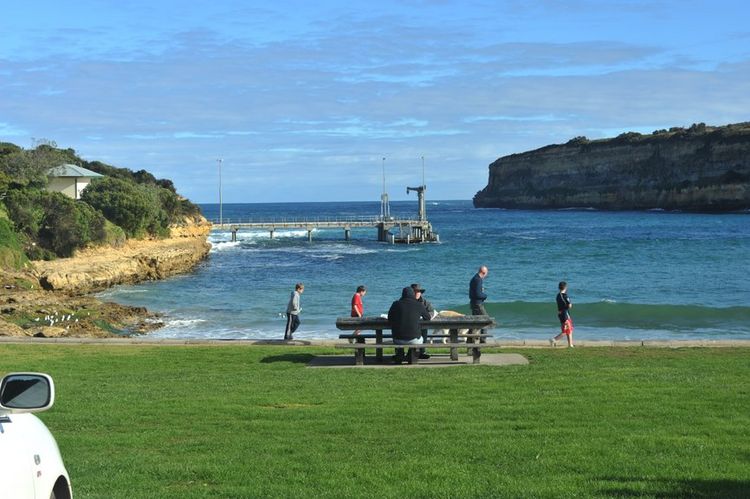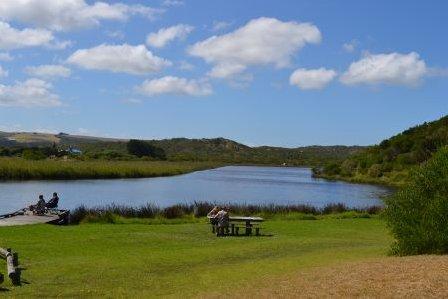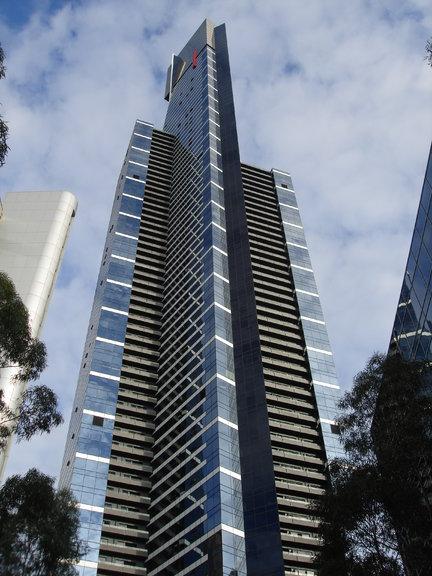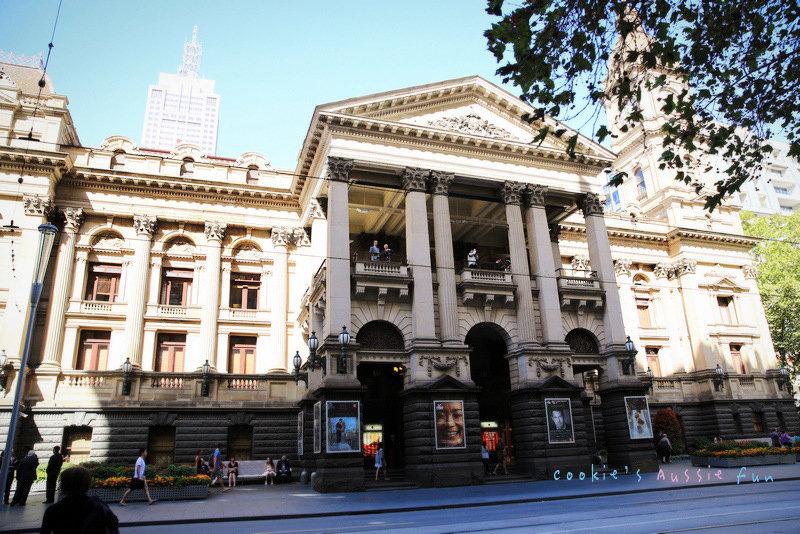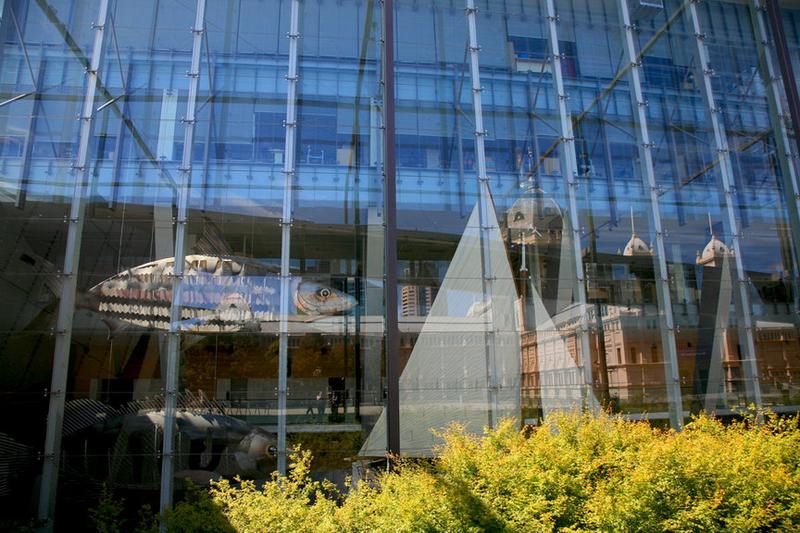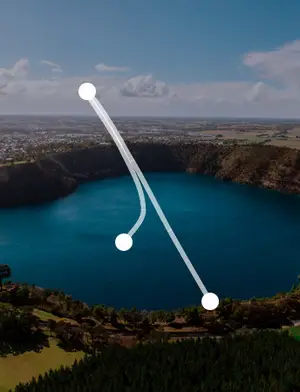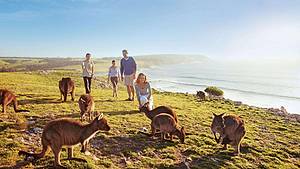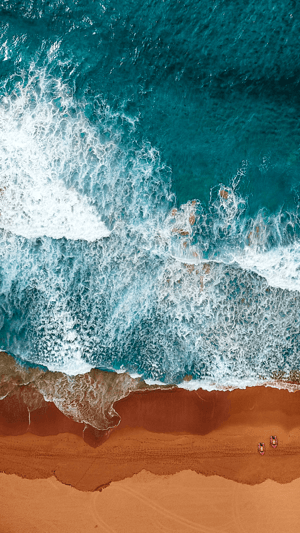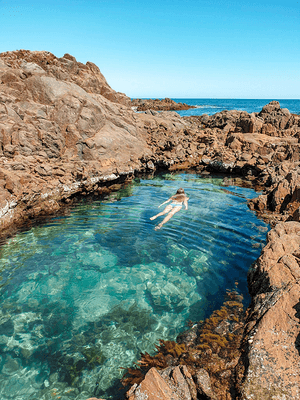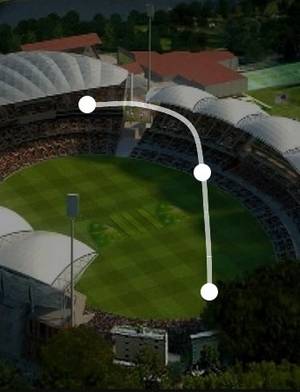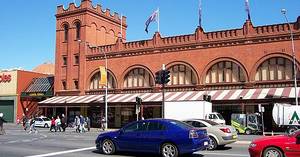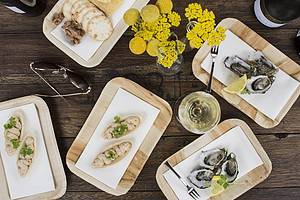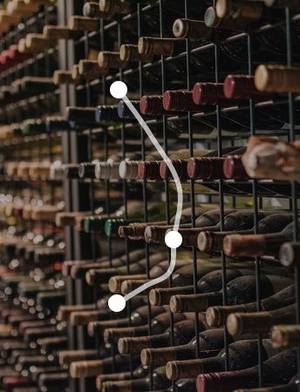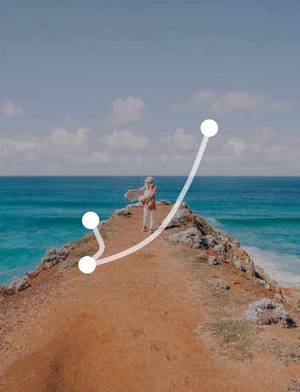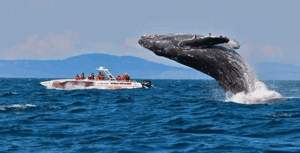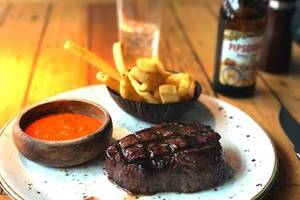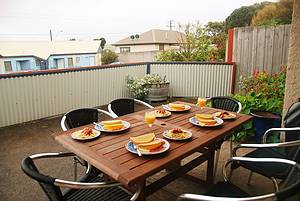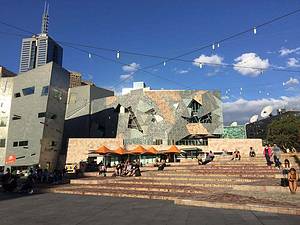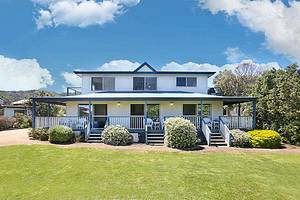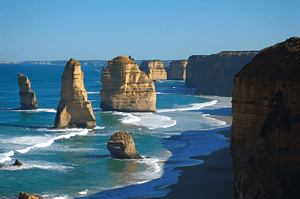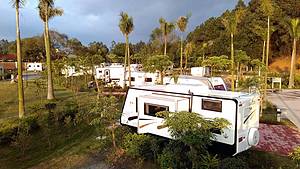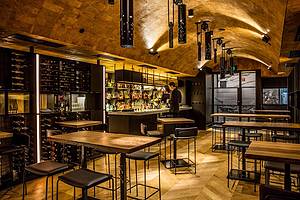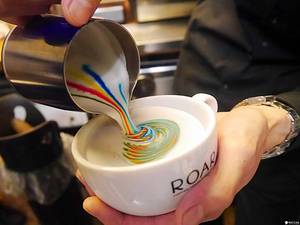8-day Self-drive Tour along Australia's Magnificent Coastal Line
7 cities |
26 attraction(s) |
total distance 285
km
 TIPS
TIPS
Day1
Day2
Day3
Day4
Day5
Day6
Day7
Day8
Day1: Melbourne
4 attraction(s) ·
5 km
1
Flinders Street Station is the largest and busiest train station in Melbourne, Australia. It is a Victorian-era building and the first railway station in Melbourne. Located in the city center, directly opposite Federation Square, with St Paul's Cathedral nearby. It is a landmark building on Swanston Street and a popular meeting point for locals. The station's famous "meet under the clocks" refers to the large clock in front of the station. The entire station is made of yellow stone, with a distinctive bronze dome. At night, the station is illuminated by yellow lights, showcasing a different classical and magnificent Victorian architecture. It is worth visiting Flinders Street Station at night to experience its unique charm.
2
km
2
Melbourne's Chinatown is located on Little Bourke Street, primarily referring to the section between Swanston and Exhibition Streets (as there are Chinatown arches at the intersections of Swanston/Little Bourke Street and Exhibition/Little Bourke Street). The liveliest part of Chinatown is the section between Swanston and Russell Streets.
There are numerous Chinese restaurants and shops on both sides of Chinatown and its vicinity. Most of the shopkeepers (including bank and post office staff) can speak Mandarin and Cantonese, making it a place where tourists can seek assistance besides shopping. Australian souvenirs such as sheepskin and lanolin can also be purchased in Chinatown, and bargaining is encouraged.
Melbourne's Chinatown is a one-way street, allowing vehicles to travel only from east to west. Pedestrians have no restriction on their walking direction, but they must be cautious of cars. On major holidays like Chinese New Year and Mid-Autumn Festival, Chinatown is closed to vehicles and becomes a pedestrian-only street on designated days (usually a Saturday or Sunday).
2
km
3
Swanston Street begins from Flinders Street, and on the corner, there are St Paul's Cathedral, Federation Square, and Flinders Station. Swanston Street connects with St Kilda Road on the south bank of the Yarra River, forming the central axis of Melbourne's city center.
3
km
4
If you are interested in Gothic architecture, you can visit the University of Melbourne. Founded in 1853, it is still one of Australia's top universities and not only has a strong academic atmosphere but also tells the history and culture of this place. The beautiful and tranquil campus is also a great place for portrait photography when the lighting is good.
Day2: Melbourne
4 attraction(s) ·
5 km
1
With over 12,000 species of plants, it is more accurate to say that it is Melbourne's most "luxurious" garden. The botanical garden is located on the beautiful Yarra River, where exotic flowers and plants from Australia and around the world thrive. You can take a stroll along a dirt road through a small patch of pristine rainforest, or have some fun with a frisbee on the vast lawns scattered throughout. There is also a 4-kilometer running track that runs through the garden, and you can even spot eels and black swans in the lake.
2
km
2
National Gallery of Victoria
The Victoria State Art Gallery is divided into the Australian Pavilion and the International Pavilion. The former is located in Federation Square on the north bank of the Yarra River, and the latter is located next to the Cultural Arts Centre on the south bank of the Yarra River. If you want to learn about Australian art and culture, this is definitely the place to go. The National Art Gallery, located in Ian Potter Centre on Federation Square, houses over 20,000 artworks from colonial to contemporary Australian art. The Aboriginal paintings on the first floor are particularly interesting. They may appear abstract, but once you understand the symbols used by the Aboriginal people, you can imagine the meanings they express in their paintings.
2
km
3
You can choose to immerse yourself in the Victoria State Library established in 1854, admire the famous giant dome of the La Trobe Reading Room, or find a quiet corner in the Arts Reading Room to enjoy music. Sitting lazily on the lawn in front of the library with the locals, basking in the sun and watching people pass by, is also a good way to relax. Just be careful of seagulls eyeing your snacks.
2
km
4
Federation Square is the largest public square in Melbourne, Australia. It covers an area of 3.2 hectares and is located in the city center, along the Yarra River. The square features unique architecture with colors and styles that reflect the rich Indigenous Australian culture and respect for the indigenous heritage.
Federation Square is a popular destination for locals and tourists, especially the visitor center. It hosts various festive events throughout the year and is a classic location for the New Year's Eve countdown. The square also has a giant screen that frequently broadcasts important sports events such as the Australian Open tennis finals, the Australian Rules Football Grand Final, and the opening and closing ceremonies of major international sporting events. Many tourists and locals gather here.
Previously, the site of the square was the office building of the Gas and Fuel Corporation of Victoria from the 1960s to the mid-1990s. It was later demolished and the current Federation Square was built as a result of an international design competition held by the Victorian government in 1997. The winning design by a London-based designer became the concept for the current Federation Square.
Opened in 2002, Federation Square is a mixed-use and multifunctional space. It features 16 cafes, bars, and restaurants, as well as boutique shops and a tourist service center offering services such as bike rentals, bus and cruise tours, free Wi-Fi, and ticketing services. It is surrounded by six other attractions including The Ian Potter Centre (NGV Australia), the Australian Centre for the Moving Image (ACMI), the National Gallery of Victoria Kids Space, the Australian Commercial Galleries Association (ACGA), the Fed History Showcase, and Melbourne Visitor Centre.
These are the six attractions located around Federation Square.
Day3: Torquay > Great Ocean Road > Lorne
4 attraction(s) ·
93 km
1
Surf World is a heaven for surf culture. It is the largest surfing and beach culture museum in the world, including the Australian Surfing Hall of Fame as part of the overall surfing exhibition. Surf World has been recognized by the International Surfing Association as one of the "most important centers of world surfing heritage." Surf World is a must-visit iconic interactive tourist attraction that showcases the essence of past, present, and future surfing activities through modern means. It provides comprehensive insights into surfing history, culture, and sports on regional, national, and global levels.
23
km
2
Eastern Beach in Geelong is located in the northeast of the city center, facing Corio Bay and with a backdrop of greenery. It is a popular destination for both travelers and locals to relax and enjoy. Adjacent to the beach are various interesting sculptures, fountains, and a small Ferris wheel. There is also a playground and swimming pool for children to play. During sunny summer days, you can go swimming in the sea, have a barbecue or picnic on the beachside green, or dine at the various restaurants nearby. Most of the restaurants serve good food, and if you're not a fan of Western cuisine, you can also sit at a waterfront seat and enjoy a cup of coffee.
69
km
3
Long En Beach is very close to the main street, and you can see it as soon as you leave the Wei Line Bus Station. As one of the most famous resorts in Victoria, the beach is definitely a must-visit place for leisure. During the summer, many locals swim, surf, sunbathe here. There are also many people fishing at the mouth of the Esken River entering the sea. There are also many barbecue pits near the beach. When the weather is not hot in the summer evenings, you can buy fresh fish fillets from the seafood shops on the main street and have a barbecue here, which tastes great. The annual thousand-person swimming competition is also held here, and the spectacular scene is unforgettable when witnessed in person.
2
km
4
At the end of Lorne Town, there is a deep-sea pier that provides a view of the town and is also perfect for fishing. Adjacent to the pier is the renowned Lorne Pier Restaurant, where you can enjoy delicious oysters and lobsters.
Day4: Apollo Bay > Great Ocean Road
5 attraction(s) ·
101 km
1
The Great Otway National Park stretches from the town of Torquay to Princetown, and extends northwards through the Otway hinterland to Colac. The park features a winding coastline, sandy beaches, rocky platforms, wind-swept heathland, towering forests, fern-filled valleys, majestic waterfalls, and peaceful lakes. It showcases the diversity of nature, with magnificent waterfalls and sparkling gorges. The park offers excellent camping grounds throughout, catering to families seeking a holiday spot for their camper vans, as well as those in search of solitude to gaze at the night sky.
12
km
2
Cape Otway Lighthouse is the oldest and well-preserved lighthouse in Australia. It provides hope for early Australian immigrants after months of sailing. From the top of the 90-meter tall tower, you can overlook the wild Southern Ocean and understand why numerous shipwrecks occurred along this isolated and rugged coastline. The museum houses early telegraph and radar stations, and you can also enjoy the spectacular views of Bass Strait. From Apollo Bay to the lighthouse, there is a great chance to see koalas. The waterfalls and beautiful sunsets here will also impress you with the wonders of nature. The traditional Head Lighthouse Keeper's cottage has four bedrooms, two bathrooms, a fireplace, a fully equipped kitchen, and laundry facilities. The Manager's House is renovated and offers a comfortable experience for travelers.
78
km
3
The Twelve Apostles is one of the most famous attractions on the Great Ocean Road, located in the Port Campbell National Park. These rock formations, initially consisting of thirteen different-shaped giant limestone pillars, resemble the twelve apostles following Jesus in the Bible, hence the name "The Twelve Apostles."
These pillars, about 45 meters high, have been eroded and weathered by the sea over time, and five of them have collapsed. However, this does not diminish the awe and admiration that this natural wonder brings. The best time to admire the Twelve Apostles is during sunrise and sunset. Standing on the lookout platform, overlooking the vast expanse of the sea, feeling the gentle sea breeze, one can't help but marvel at the power of nature's craftsmanship.
The park is free for visitors and has an information center providing cultural information and basic facilities such as toilets. There are numerous viewing platforms throughout the park, allowing visitors to experience the visual impact of this wonder from different angles. Due to the fragile geological structure of the limestone, there are clear signs in dangerous areas, and visitors are advised to stay away. The best time for photography is in the early morning and evening on sunny days.
5
km
4
Lock ard Gorge is located in the Campbell Port National Park, a 10-minute drive west of the Twelve Apostles.
8
km
5
Camperdown Bay, located on the western end of the Great Ocean Road in Victoria, Australia, is a natural gorge. The Campbell Port National Park was established in 1964 and named after Captain Alexander Campbell. It is a fascinating seaside village that can be reached either by the Princes Highway, 245 kilometers southwest of Melbourne, or via the Great Ocean Road, 281 kilometers in total.
Day5: Great Ocean Road > Warrnambool
2 attraction(s) ·
77 km
1
The Port Campbell National Park is located 190 kilometers southwest of Melbourne. It covers over 1,700 hectares and is known for its limestone geological formations, including famous landmarks such as the Twelve Apostles, Loch Ard Gorge, and Gibson Steps. The park is also a haven for many native Australian bird species, such as emus and honeyeaters. In winter nights, penguins can be spotted along the coastline, but it's important to dress warmly to avoid catching a cold. Travelers who visit this park are often drawn by the Twelve Apostles rock formations, which are a highlight of the Great Ocean Road and should not be missed.
77
km
2
The eruption of a volcano formed a volcanic lake in Wunanbur to the west about 30,000 years ago, as well as a densely vegetated area. There are abundant wildlife, many lightweight hiking trails, and many plants, as well as an indigenous cultural center. It is very suitable for family picnics.
Day6: Kangaroo Island
1 attraction(s) ·
0 km
1
"Flinders Chase National Park is one of the largest parks in Australia and one of the most important and largest parks in South Australia. It covers an area of 74,000 hectares and is a protected area for native Australian animals such as kangaroos, wallabies, koalas, and echidnas. The absence of introduced predators allows the animals to thrive and reproduce, and wild koalas can be spotted on the trees along Rocky River in the park. Additionally, the park is home to a diverse range of native plants."
Day7: Melbourne
3 attraction(s) ·
4 km
1
Whether you have just walked out of the train station, or taken a tram, or strolling along the streets, this church located at the corner of Flinders St and Swanston St is a must-see sight. Through the frequently opened heavy wooden doors, you can enter this Neo-Gothic building and admire the stained glass on every side.
1
km
2
"Graffiti" is the Chinese term for this art form. It originated in the 1960s in Philadelphia and Pennsylvania in the United States. Over the past 40 years, graffiti has evolved from simple writing to more complex styles and techniques. It started as an expression of African American voices and was associated with youth, rebellion, and counter-cultural movements. Graffiti has become a global art form, influenced by popular culture. It has connections to Pop Art but differs in that graffiti artists often lack formal training in painting. Some graffiti artists have gained recognition and their work has been exhibited. Melbourne, Australia, has strict anti-graffiti regulations, leading young graffiti artists to express their creativity in alleyways. One well-known graffiti artist in Melbourne is Adrian Doyle, a founder of the graffiti art scene and a respected artist. The street art in Hosier Lane, located near Flinders Street in Melbourne's central business district, changes frequently and features various graffiti styles, including spray painting and poster pasting. To fully appreciate graffiti, one must experience it by walking through these streets and alleys.
4
km
3
Except for flying over the city area before landing in Melbourne, the only place where you can bird's-eye view Melbourne is the observation deck of Eureka Tower, the tallest residential building in the world. The fastest elevator in the southern hemisphere takes you up 88 floors at a speed of 9 meters per second, and then you can carefully admire Melbourne from this observation deck surrounded by floor-to-ceiling glass. Small fixed telescopes correspond to iconic buildings or landscapes in Melbourne. You can also step outside the glass walls through a sealed cabin, with only a layer of wire mesh preventing you from falling 300 meters into the void. For an additional cost, you can also experience the Edge, a glass box (including the floor) that can be extended outward from the building, giving you a feeling of hanging in mid-air with both feet dangling.
Day8: Melbourne
3 attraction(s) ·
3 km
1
The Royal Arcade, built in the late 19th century, is Melbourne's oldest Parisian style shopping arcade. It was constructed in 1869 and connects Little Collins Street and Bourke Street Mall. This arcade is an important Victorian-era building and a landmark in Melbourne. The Royal Arcade now houses popular shops and some specialty stores, such as a tarot card shop.
1
km
2
Built in 1869, the Melbourne Town Hall was designed by the renowned local architect Joseph Reed in the Second Empire style. It features a concert hall and was once the most renowned music hall in Australia.
2
km
3
Melbourne Museum is the largest museum in the southern hemisphere and a must-visit tourist attraction in Melbourne. Located north of the CBD, just 5 minutes from the city center, it houses 17 million exhibits showcasing the history of Australian society, indigenous culture, and scientific development. It is adjacent to the World Heritage-listed Royal Exhibition Building and Carlton Gardens. The museum also features the world's largest IMAX 3D cinema.
Its main three sections are:
1. IMAX Cinema: Featuring the world's largest movie format, with an eight-storey-high screen, showcasing documentaries and the latest releases in both 2D and 3D.
2. Bunjilaka Aboriginal Cultural Centre: A space for Indigenous and non-Indigenous people to learn about the Koorie (South-Eastern Aboriginal) people of Victoria, showcasing art, artifacts, stories, and performances.
3. Permanent Exhibitions: Dynamic Earth, Evolution of Victoria over 6 million years, Sam the Koala, Wild Animals, Walk with Dinosaurs, Memory and Dreams, Insect World, Our Sea, Marvelous and Magical Human Body, Smart Home of Water, Australia's Other Computer, Secrets of the Forest, Children's Area (how plants, animals, minerals, and humans grow), DNA Exploration and Mechanisms, Pharmacy, and an outdoor "Colonial Plaza."
